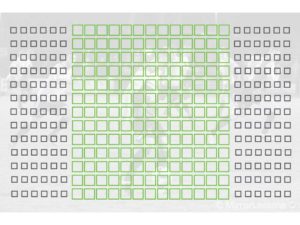As far as X-Series cameras go, you can’t get much more different than the flagship X-H1 and the mid-range X-E3.
The X-H1 is the most robust, most advanced and unsurprisingly, most expensive Fujifilm camera to date. It is also equipped with features never before seen on an X-Series camera, the most important being 5-axis in-body stabilisation.
The X-E3, by contrast, is a rangefinder model with an excellent array of features but a smaller and less solid construction and a less prohibitive price tag to match.
If you’re curious to find out all the main differences between these two cameras, you’ve come to the right place. Let’s get started!
What is the same on the two models:
- 24.2MP APS-C X-Trans III sensor and X-Processor PRO
- ISO 200-12800 (Pull 100, 125 and 160, push 25600 and 51200)
- advanced hybrid autofocus system with 91/325 points
- continuous shooting speeds up to 8fps (mechanical) and 14fps (electronic)
- WiFi and Bluetooth connectivity
Ethics statement: The information supplied in this article is based upon official specifications and our personal experience with the X-E3 and other Fujifilm cameras. We were not asked to write anything about these cameras, nor were we provided with any sort of compensation. Within the article, there are affiliate links. If you decided to buy something after clicking the link, we will receive a small commission. To know more about our ethics, you can visit our full disclosure page. Thank you!
1. 5-Axis Image Stabilisation
The X-H1 may be the first X-Series model to employ 5-axis in-body sensor stabilisation (IBIS) but it is far from the only mirrorless camera on the market to have it. If truth be told, this technology has been a staple on most mirrorless models for the past couple of years, so we could say that rather than being innovative, Fujifilm is actually playing the catch-up game in this case.
The stabilisation system works with all Fujinon lenses, even those that lack optical stabilisation. With most lenses it promises up to 5EV stops of compensation, which is on par with the market standard. However the performance can vary with some lenses. For example, it can achieve 5.5Ev with the XF 35mm f1.4 but only 2.5Ev with the 10-24mm.
With OIS lenses, it uses three axes on the sensor and two axes on the lens. Here again there is an exception, the 80mm Macro, where it uses 1 axis on the sensor (Roll) and 4 on the lens since the latter incorporates two sensors (gyro and acceleration).
If you adapt third party lenses, you can only use three axes on the sensor and you need to input the focal length manually inside the menu.
The X-E3 lacks IBIS, so you need to rely on the optical stabilisation of OIS lenses to obtain good results at slow shutter speeds.
2. Video Specifications
The X-E3’s video specifications were already pretty good, being able to shoot in 4K at 30fps or Full HD at 60fps, but the X-H1 pushes the boundaries even further.
In addition to the standard 4K/30fps setting, the X-H1 offers both Cinema 4K/24fps and Full HD at 120fps with a bitrate that is twice as fast as that of the X-E3 (200 mpbs).
The maximum recording time in 4K is 15 minutes on the X-H1 or 10 minutes on the X-E3. This can be increased to 30 minutes by attaching the vertical grip to the X-H1. As for Full HD, the X-E3 can record for a maximum of 15 minutes while the X-H1 can manage 20 minutes on its own or 30 minutes with the grip.
Also worth mentioning is that the X-H1 records 4K by slightly cropping the sensor (1.17x). It performs full pixel readout in order to record crisper, more detailed footage.
The X-E3 uses the entire width of the sensor but also sub-samples. This means that while the field of view remains unchanged, the quality of the footage is sligthly inferior when it comes to sharpness.
Then we have F-Log, which is the log profile found on the X-H1 and X-T2. Put simply, it allows you record the widest dynamic range possible, which is useful when grading your footage in post production. Usefully, F-Log can be recorded internally to an SD card on the X-H1, so you don’t need an external recorder.
3. Body Design
The most obvious difference between the two cameras is that the X-H1 has an SLR-like design while the X-E3 looks more like a rangefinder, but that’s only scratching the surface.
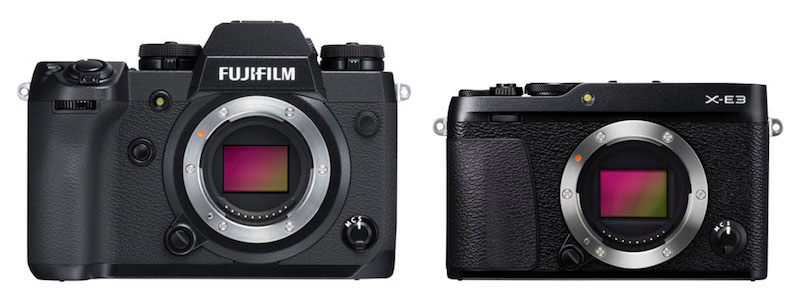
Whereas the X-H1 has a tough magnesium alloy chassis with full weather-sealing (splash, dust and freeze proof down to -10 degrees), the X-E3 is primarily constructed of plastic with the exception of the top and bottom magnesium plates.
The lightweight construction makes the X-E3 about half the weight of the X-H1.
- X-H1: 139.8 x 97.3 x 85.5mm; 673g (with battery and SD card)
- X-E3: 121.3 x 73.9 x 42.7mm; 337g (with battery and SD card)
As for the buttons and dials, the X-H1 offers more including stacked dials with ISO/drive and shutter speed/metering options.
The X-E3 has two dials on top: one for shutter speed and the other for exposure compensation. Protruding from the shutter speed dial is an Auto switch for beginners. The Drive settings have been allocated to a button on the rear.
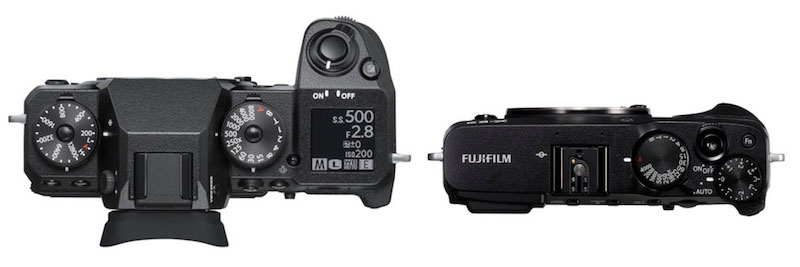
Both come with a Q menu button, focus mode selector on the front, AF joystick, two front/rear command dials and a various function buttons.
Another salient difference is the lack of a four-way D-Pad on the X-E3. (It has been replaced by the touch screen as we’ll discuss in the next section.) To navigate the menu, you can use the AF joystick instead.
The X-H1 benefits from a dual SD card slot and each slot is compatible with UHS-II cards. The X-E3 only has one, located at the bottom within the battery compartment.
Finally we come to the terminals. On the X-H1, you’ll find a 2.5mm remote connector, 3.5mm mic jack, Micro USB 3.0/2.0 connector and HDMI Micro connector (Type D).
The X-E3 has fewer ports by comparison: a 2.5mm mic/remote connector, HDMI micro (Type D) connector and Micro USB 2.0 connector.
Neither model comes with a built-in pop up flash but you can attach an external unit to the hot shoe. The flash sync speed is 1/180s on the X-E3 or 1/250s on the X-H1.
4. Electronic Viewfinder / LCD Monitor
The X-H1’s OLED electronic viewfinder is probably the best you can find in the X-Series. Not only is it large (0.5 inches) but it also has a very good magnification of 0.75x, a high resolution of 3.690k dots and a fast refresh rate of 100fps (with the boost mode).
The EVF of the X-E3 is smaller (0.39 inches) with a lower magnification of 0.62x. The refresh rate is a fixed 55fps. It is located on the left-hand side of the body rather than the centre, which is one of the features X-E users like the most.
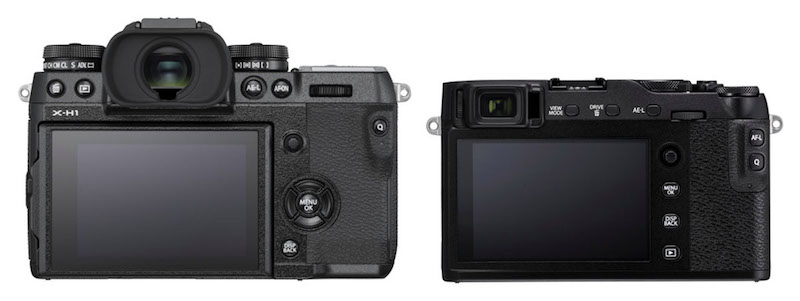
Although both cameras have a 3-inch LCD screen with 1040k dots of resolution, the one on the X-E3 is fixed, which is somewhat disappointing given how useful tilting screens are when shooting at awkward angles for example. The one on the X-H1 features a three-directional mechanism, meaning it can be easily adjusted when shooting in either landscape and portrait orientation.
Both screens employ touch technology that allows you to select the focus area, focus, or take a picture even when framing with the EVF. However, only the X-E3 has the “Touch Function” mode that allows you to activate up to four different settings by swiping left, right, up or down. As mentioned above, it can be considered a virtual replacement for the physical D-Pad on the X-H1 and other X-Series cameras.
The rear monitor isn’t the only monitor you’ll find on the X-H1. Like the medium format GFX-50s, it also benefits from a shoulder monitor on the top plate that displays all the most important settings.
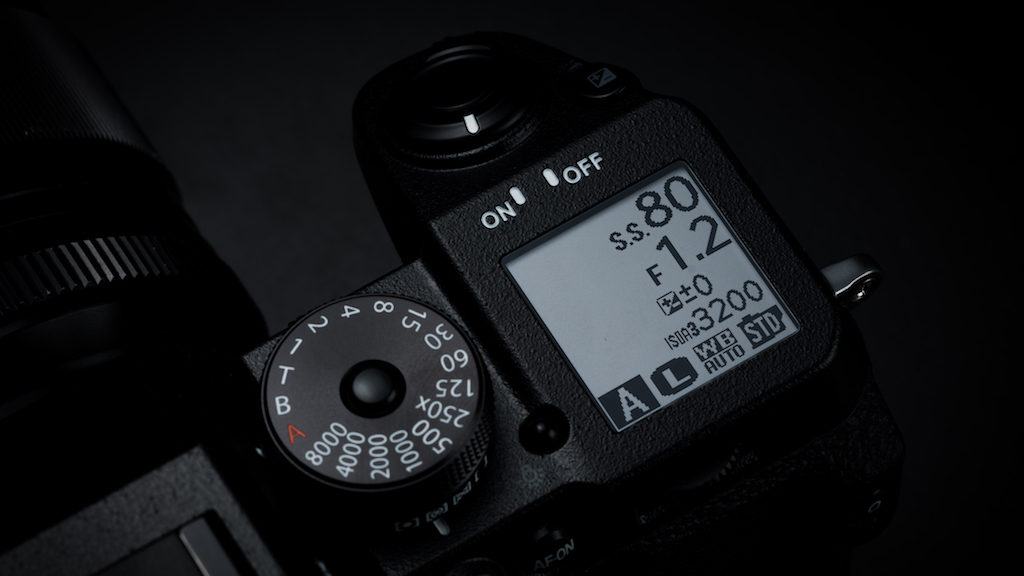
5. Shutter and Continuous Shooting Speeds
Here we have a small yet noteworthy difference that is directly related to the performance enhancements afforded by the X-H1’s vertical battery grip.
On their own, both cameras provide continuous shooting speeds of 8fps (CH) or 5fps (CL). The first gives you a faster speed but no live view (the last picture taken is shown instead), while the second gives you live view with blackouts. Switch over to the electronic shutter and the maximum speed goes up to 14fps.
By attaching the vertical grip to the X-H1, you can raise the maximum mechanical shutter speed to 11fps, which is the same as the X-T2.
As for the fastest speed with the mechanical shutter, the X-H1 goes up to 1/8000s whereas the X-E3 stops at 1/4000s (up to 1/32000s for both with the electronic shutter).
6. Updated Autofocus Algorithm
The X-H1 and X-E3 employ the same advanced hybrid autofocus system consisting of contrast and phase detection points. The user can choose between a 13×25 grid with 325 points or a 7×13 grid with 91 points, as well as a variety of AF Custom Settings.
That said, the X-H1 has been updated in a few small ways to make it even more effective.
For example, the sensitivity of the phase detection AF has been improved by approximately 1.5 stops (from 0.5 LW to -1.0 LW). This means that it can now be used at aperture values up to f/11 which is useful with the XF 100-400mm and TC 2.0 teleconverter for example.
Continuous AF while zooming has also been improved and the updated algorithm promises better results for fast moving subjects such as wild animals.
The X-E3’s autofocus system is already slightly enhanced in comparison to the first 24MP X-Trans cameras but the X-H1’s autofocus algorithm should be the most advanced to date.
That being said, we have yet to see if there will be a significant difference in field conditions. We’re not expecting to see any massive changes in performance here – after all, the current AF system is already extremely reliable – but it is nice to see that Fujifilm is continually tweaking the algorithm to make it better.
7. New Film Simulation Mode
The new film simulation mode is called “ETERNA” and becomes the 16th in the catalogue. It has been designed for video use and as of now, is exclusive to the X-H1. It may come to other cameras via firmware update in the future.
8. Flicker Reduction Mode
Flickering can be an issue when shooting in continuous mode under artificial lights, especially fluorescent lights as the exposure may not be constant throughout all the frames.
The new Flicker Reduction setting should make it so that the images are properly exposed during burst shots. This should be useful for indoor sports in particular.
9. Electronic First Curtain Shutter
The X-H1 becomes the second X-Series camera after the medium format GFX-50s to feature an electronic front curtain shutter (EFCS). The purpose of the EFCS is to eliminate camera shake produced by vibrations from the mechanical shutter mechanism. It can be useful when shooting at slow shutter speeds for example.
The X-E3 lacks an EFCS, but you can still choose between the mechanical shutter and the silent electronic shutter.
The X-H1 also features a vibration-free closure that minimises the finest vibrations inside the body and Fujifilm advertises it as the quietest shutter mechanism in the X-series.
10. Battery Life
Finally we come to the battery life of the two cameras. Despite using the same NP-W126S battery, the X-E3 lasts longer on one charge.
For example, it can take 350 still images or up to 50 minutes of 4K video before the battery runs dry. The X-H1, by comparison, can manage as many as 310 shots or 35 minutes of 4K video.
By attaching the vertical grip to the X-H1, however, you can significantly increase the battery life for stills and video.
Conclusion
Although we’ve reached the conclusion, I believe it is worth reiterating that the X-H1 and X-E3 are two very different cameras designed for completely different target audiences.
Whereas the former is a heavy-duty workhouse designed with professionals in mind, the latter is more appropriate for photographers who simply want a powerful yet portable body they can carry with them anywhere.
If you don’t require features such as weather-sealing, 5-axis stabilisation or 4K video at 24fps, you will likely be just as content with the X-E3 as long as you don’t mind the fixed screen and offset viewfinder.
And of course, there is also the price to consider. The X-H1 is expected to debut at $1900 for the body alone. By choosing the X-E3, whose current retail price for the body is approximately $900, you can put aside some money for a new lens or accessory or simply save it for a rainy day.
Check the price of the Fujifilm X-H1 on
Check price of the Fujifilm X-E3 on


